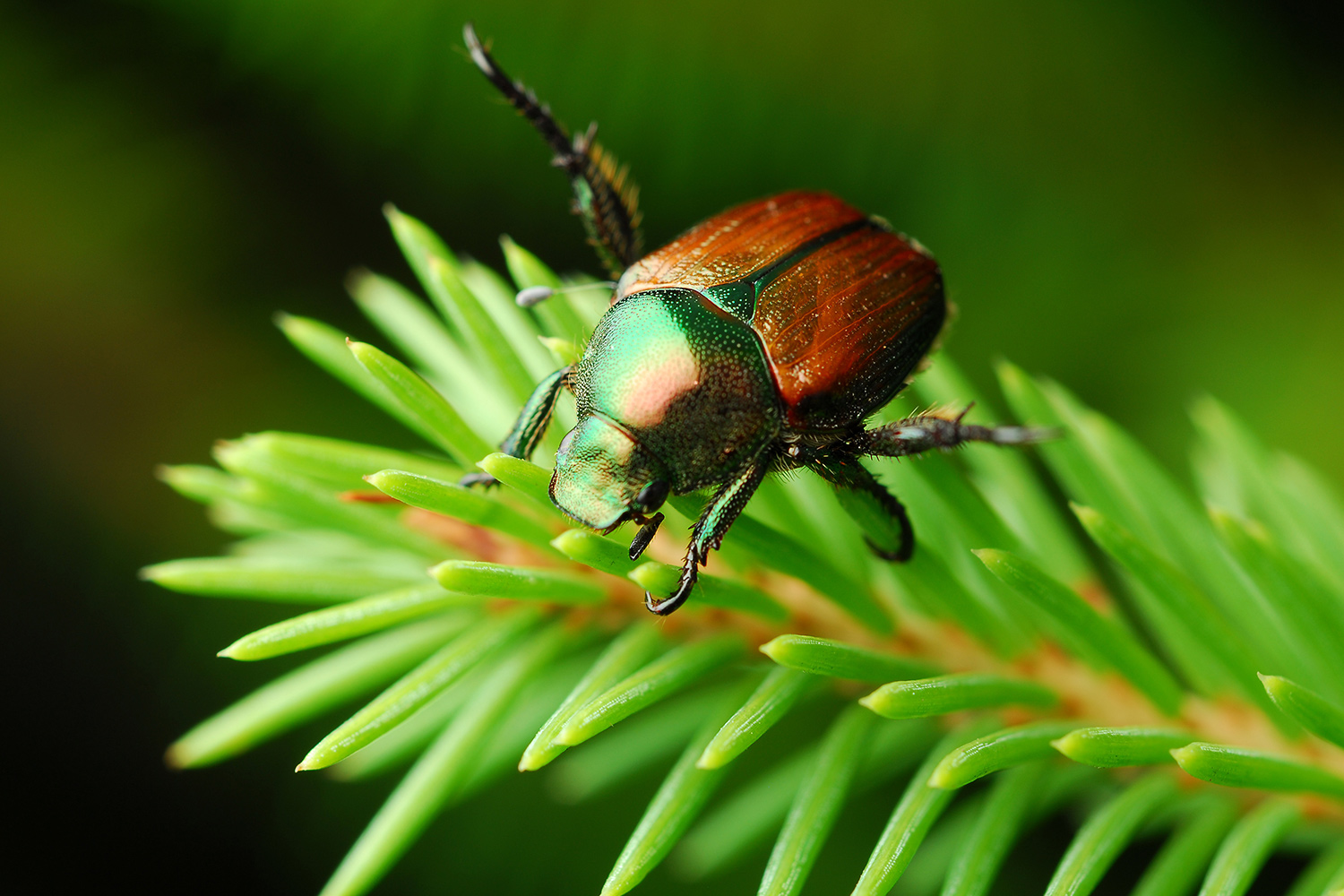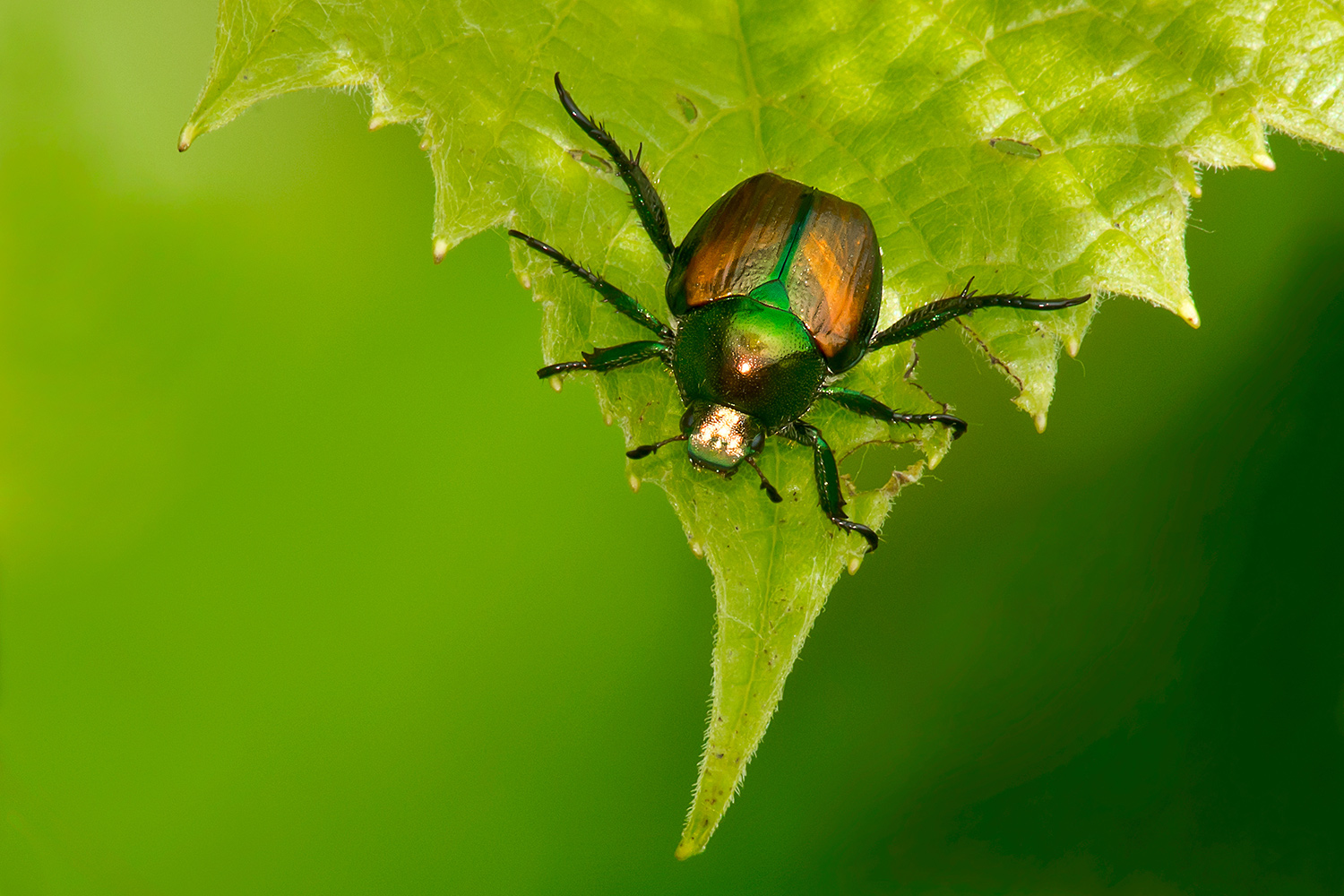Both adult Japanese beetles and their larvae (known as grubs) can greatly damage gardens and yards if they are not treated. An infestation can grow very quickly, requiring the use of insecticide sprays, granules, powders, and traps. DoMyOwn has the products needed to control an infestation and prevent new beetles from invading your lawn.
Here are a few common Q & A Japanese beetle facts to help you understand how to control these pests better.
Q: What are Japanese beetles?
A: Japanese beetles are scarab beetles, a family of beetles that tends to appear in early June and last a couple months. All can be called “June bugs,” but each species is different and causes different degrees of damage. Japanese beetles are the adult form of the white grub. Japanese beetles have a distinct metallic green body and head and copper colored wings. All other beetles in this species, like the Asiatic garden beetle, are various brown shades except for the green June beetle, which is mostly a bright green.


Q: Where did Japanese beetles come from?
A: Japanese beetles were accidentally introduced into the United States in 1916, but before that were only found in Japan.
Q: Do Japanese beetles bite?
A: Japanese beetles do not bite, but they have spines on their legs that can be sharp.
Q: What is the Japanese beetle life cycle?
A: Adult females lay eggs in the soil around July. The white, C-shaped grubs emerge from the eggs and feed on roots of grass throughout the summer. The grubs overwinter deeper underground and begin to move up to the roots again when the soil temperature rises to about 50 degrees until they pupate and emerge in early June as adults. Adult beetles live for about 30-45 days.
Q: What do Japanese beetles eat?
A: They begin feeding on low-lying plants before moving up to shrubs, trees, and crops. Plants most likely to be eaten by the beetles are roses, Japanese and Norway maple, horse chestnut, hollyhock, gray birch, American chestnut, Rose-of-Sharon, apple, cherry, plum, peach, mountain ash, American and English elm, and grapes.
Q: What does Japanese beetle damage look like?
A: They can devour leaves, flowers, and overripe or damaged fruits. The damage appears as lacy leaves for adult beetle damage and yellowed patches of lawn for grub damage.
There are several treatments you can implement for killing Japanese beetles, lessening possible damage, and keeping them away. We recommend using a pyrethroid insecticide or repellant such as Talstar P or a natural insecticide like Essentria IC3 to control adult Japanese beetles. Spraying susceptible plants every 3-4 weeks while beetles are active with the highest allowable rate on the label is important. If your Japanese beetle population is very large, we recommend treating your lawn to kill the eggs and grubs and prevent adult infestations in the warmer months. Treating your lawn with Merit Granules early or milky spore powder later in the season will eliminate many of the grubs. Timing this type of treatment is key and you should contact your local cooperative extension to find out the best time to treat grubs in your area.
If your population isn’t very high, hand pick beetles off your plants and put them in a bucket of soapy water. Wrapping prized plants like roses in cheesecloth or fine mesh will protect them from large feeding populations. When landscaping a known Japanese beetle area, try to pick plants that Japanese beetles aren’t fond of, such as red and silver maple, boxwood, flowering dogwood, holly, white and green ash, magnolia, red mulberry, white poplar, common lilac, and most ornamental evergreen plants.
Japanese beetle traps can be effective tools for getting rid of these pests. It is recommended to kill these insects while they are still in the larvae stage (white grubs), but if they are already grown and infesting your property, using traps in conjunction with the sprays mentioned above can work really well.
Japanese Beetles are the adult stage of white grubs. Please visit our white grub page for ways to eliminate the larvae stage of the Japanese Beetle. This will eliminate your Japanese Beetle issues in future years if you treat early enough for white grubs.
Can't find the product you are looking for? E-mail us and we'll get it for you!
We sell professional do it yourself pest control (diy), exterminator and
extermination insecticide, pesticide, chemical and bug killer treatment
products to spray, eliminate and exterminate pests.
Many of our products are not available in stores
such as Home Depot, Walmart or Lowes.